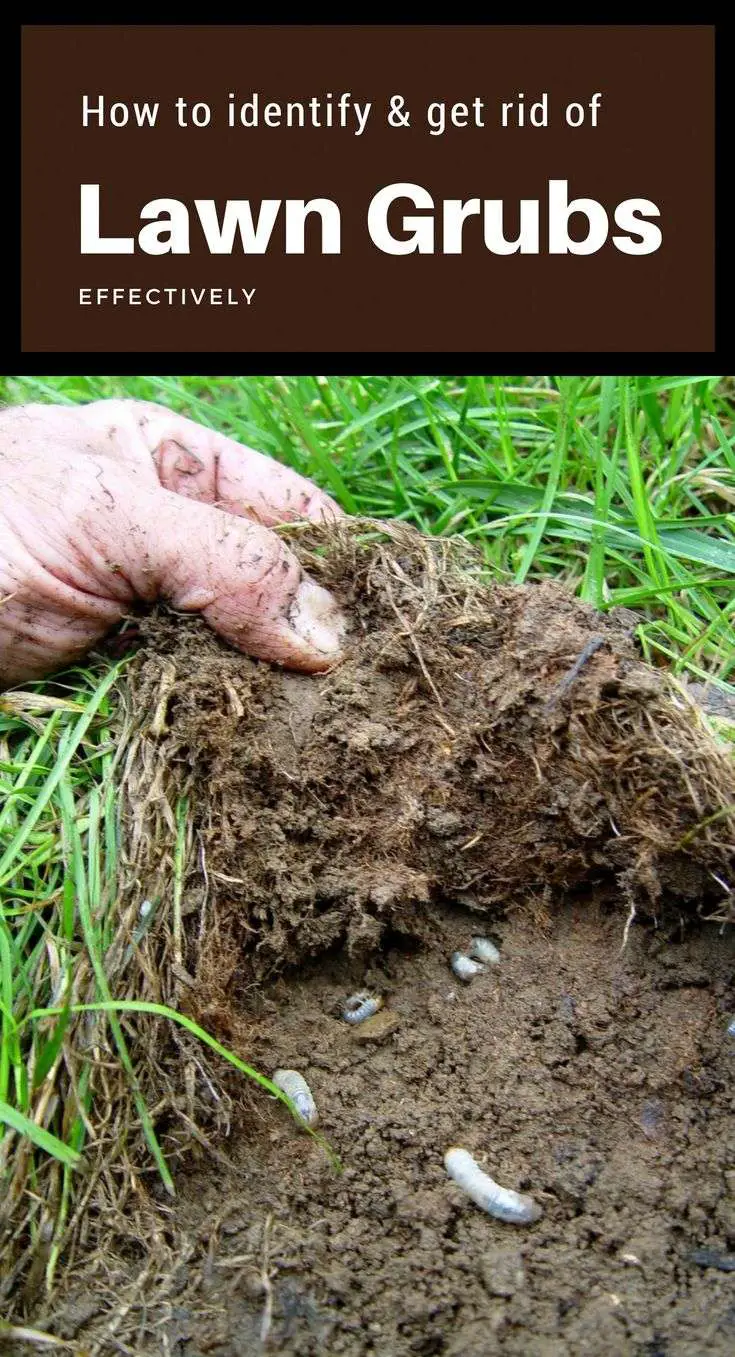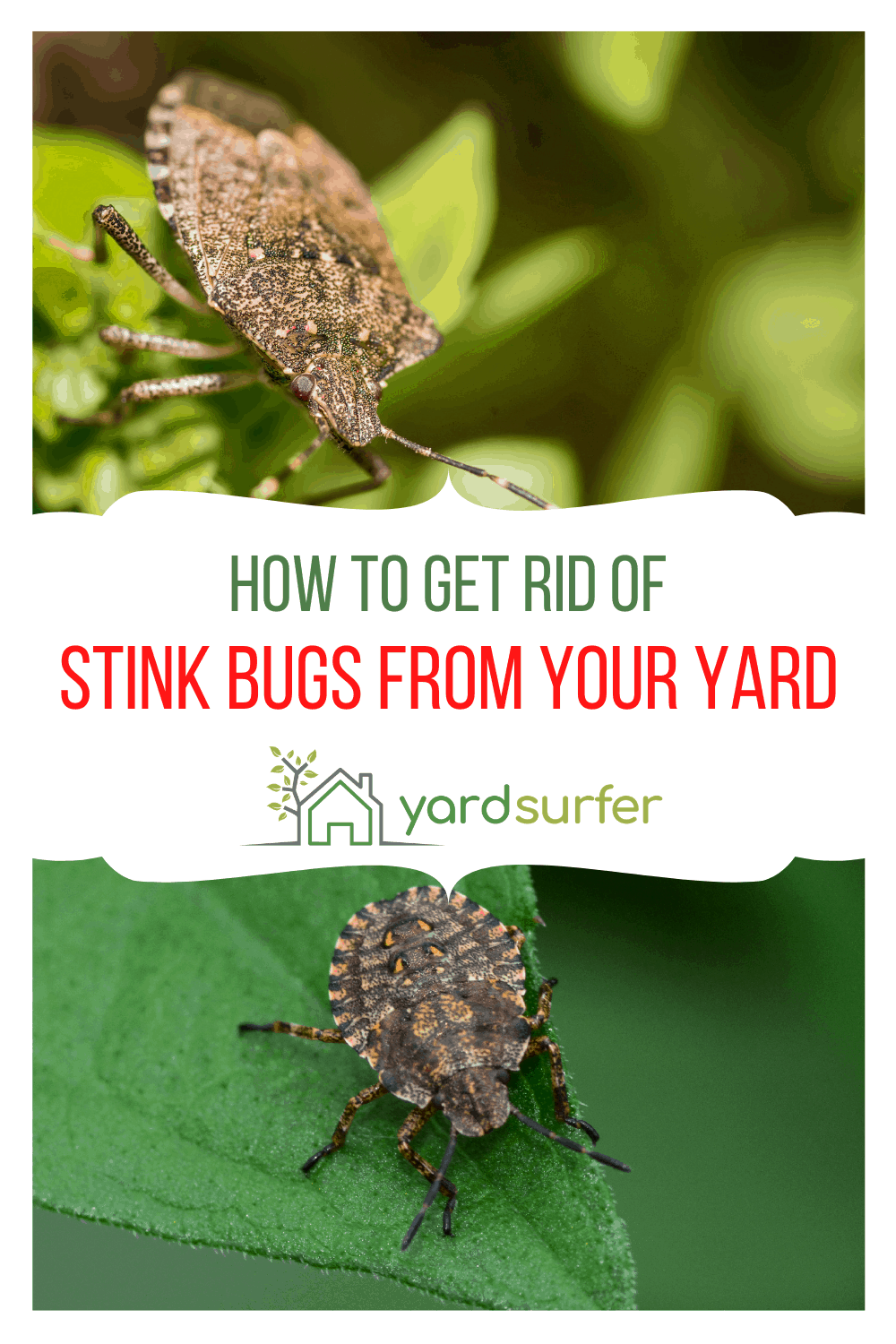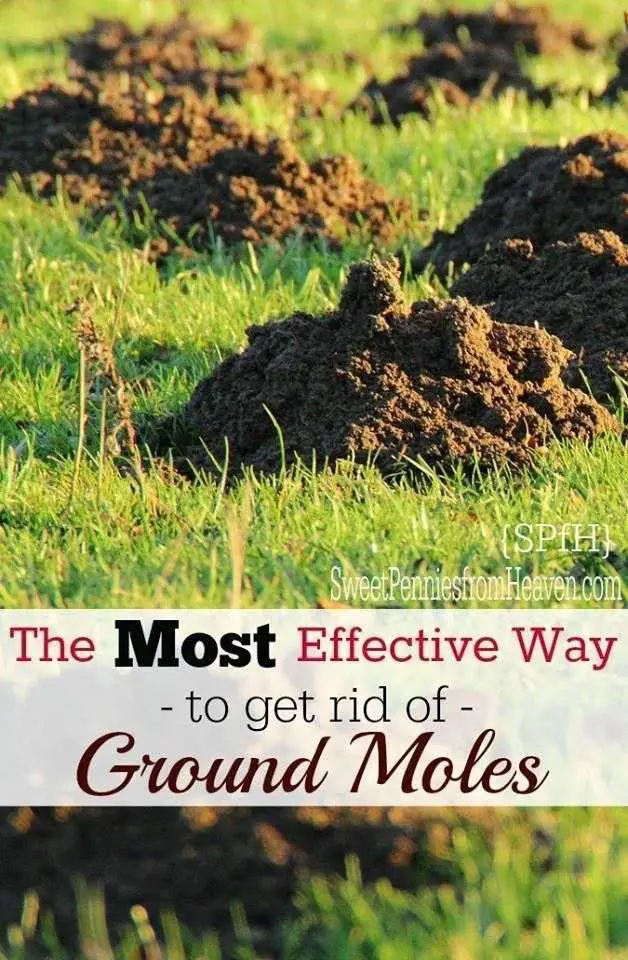How To Tell If You Have Lawn Grubs
The first sign of lawn grubs is often irregular brown patches in your lawn. These could be caused by many different factors, but if you can pull up the grass easily, its a clear indicatorthe grubs will have chewed through the roots, making it easy to separate from the soil.
Increased animal activity is another sign. Grubs make up a large part of the diets of skunks, raccoons, and birds. If you notice a lot more holes in your lawn from digging or pecking, these critters might be after abundant grubs.
Chinch Bug Life Cycle
The chinch bug lays over 250 eggs during her lifetime, which is about 4 eggs per day. Females will deposit her eggs on St. Augustine grass near where the blade of grass touches the soil.
Eggs hatch in the warmer, summer months in about two weeks with an incubation period of just about 12 days. Depending on the water, this process can be expedited or slowed.
When the eggs hatch, the nymphs look like a smaller wingless adult. Theyre yellowish and will be changed to reddish with a pale white stripe across the abdomen and eventually fade to black with a white band as the chinch bugs grow.
Adults have a body length of about 6mm with white wings and a black spot on the forewings. There are long-winded and short-winged forms of chinch bugs.
Spray Pesticides As A Last Resort
You May Like: How To Give Lawn Care Estimates
How To Spot A Chinch Bug Problem
If youâre not sure if the brown patches in your yard are caused by chinch bugs or drought, check for additional signs:
- Spots of dead grass: The turf turns yellow, then brown. The patches tend to merge into one huge area of dead grass.
- Increase in weeds: Crabgrass and thistle will start to sprout.
- Lawn looks like itâs been through a drought: No amount of water will repair the damage.
- Damage expands rapidly: One brown patch quickly turns into a dozen.
- Neighbors have chinch bugs: The bugs cant fly but they can walk and hop from one property to the next.
- You can see them: Using a magnifying glass, check the thatch in your lawn. You can also take a sheet of paper and hold it behind blades of grass to make these minuscule bugs easier to spot.
- Tin-can test: Set an open-ended coffee can or metal cylinder 3 inches into the soil. Fill the canister 3/4 full of water and continue to add water to maintain this water level for about 10 minutes. Chinch bugs will float to the top of the water.
Chinch Bug Id Anatomy And Sexual Dimorphism

Chinch bugs are about long when fully grown.
They have a gray/black body with fine hairs, white wings, and dark legs. Wings are folded over their backs and their forewings have a small triangular marking on them. There are both long and short-winged versions of chinch bugs.
Male and female chinch bugs look nearly identical and have no significant differences.
Nymphs are about a pinhead size and change colors over time.
Theyre often found in denser grass and appear during the summer months and will lay eggs during this time. Theyre hiding in the grass during winter until spring rolls around and temps hit about 50F. Then theyll fly around and start laying eggs.
Females lay about 3000 eggs over 40 days. Eggs are laid in leaf sheaths and hatch over a short period. The eggs will hatch into nymphs which grow into adults in about 6 weeks, depending on temperatures.
You May Like: Where To Rent To Own Lawn Mowers
Spray Leafy Plants With Neem Oil
Bring In Robins And Songbirds
Another natural adversary to June Bugs is Robins and songbirds. They are happy to nest in planters or other areas, so try to provide bird houses throughout your yard and garden. Of course, you could also provide food for the birds. That is always a surefire way to get birds to visit. Plus, songbirds are lovely to watch.
Explore more: Top 10 ways to keep your garden pest free
You May Like: How Much To Sharpen Lawn Mower Blades
Turf Insect Control: How To Get Rid Of Turf Insects
This page is a general turf insect control guide. Using the products and methods suggested you can get control of any turf insect species. The turf insect category pages give additional information on the different species. Follow these guides and use the recommended products and we guarantee 100% control of all turf insects.
Turf pests like white grubs, chinch bugs and sod webworms can be extremely damaging to your lawn. You may initially believe the reason your turf quality has gone down is because of lack of nutrients, water, harsh weather conditions, or possibly even lawn disease or fungus. In reality, turf insects may be the culprit.
Turf insects are usually hard to detect because they hide underneath the soil. Signs that you may have turf insects on your lawn are patches of yellow or brown on the grass, eaten grass blades and other concerning issues. By taking a look underneath your turfgrass, you may find them tucked away eating at the roots of your lawns vegetation.
Turf insects are not a human threat but they can injure your lawn significantly if there is a large population present. Often the damage can be so severe that your lawn turf can be peeled off the lawn with ease like a rug. If it gets this bad, action must be taken to address the invasion.
How To Manage Lawn Insects
Growing the appropriate grass for your climate and providing regular maintenance ensures a healthy lawn. Removing thatch from the turf reduces insect breeding grounds, and practicing good fertilization and irrigation techniques helps manage lawn insects throughout the year. You can also release naturally occurring predator insects on your lawn to help minimize pest infestations. Mowing the lawn at regular intervals and at the proper height also keeps out unwanted pests.
You should never apply pesticides to your lawn unless you have first identified a pest insect. If the pests have grown to damaging numbers, using pesticides can help reduce the population and save your lawn from any further damage. However, you should always choose a pesticide that targets the exact pest insect in your lawn without negatively impacting beneficial organisms and the environment.
A fruit tree root weevil.
You May Like: What Is The Widest Self Propelled Lawn Mower
How To Tell If You Have Grubs In Your Lawn
Short of digging up a portion of your lawn to check for grubs, there are three primary ways to detect if you have a booming grub population.
- Dead grass patches: Since lawn grubs feed on your lawns root system, they gradually kill the grass above. When the grass cannot pull sufficient nutrients and water from the soil because of damaged roots from grubs feeding, youll likely see large dead patches of grass.
- Increased animal activity: A high volume of grubs under the ground will naturally attract predators. If you notice more birds or raccoons on your property especially if they dig around in your lawn it could signify that you have an infestation of lawn grubs.
- Grass pulls easily: If you notice that you can easily pull sections of grass out along with the roots, its a good indication of grub damage.
Did You Get Rid Of The Chinch Bugs
Well, that should do it.
If youre still having problems with chinch bugs, post what youve tried so far here in the comments sections and Ill try to get back to you ASAP.
Or if youve had success with this or experience, wed all like to hear it so we can all benefit from it! Let me know in the comments section as well!
Thanks for reading.
Don’t Miss: Where Can I Get Rid Of My Old Lawn Mower
Spray Yourself With Bug Repellent
For protecting yourself from buzzing and bites, youll need a personal, body bug spray.
Gaughan suggests using a DEET repellent spray, which the Environmental Protection Agency states does not present a health concern for humans. This one from Bens claims to provide 10 hours of protection against tick and mosquito bites.
For a more natural solution, look toward a plant-based repellent like the oil of lemon eucalyptus. Gaughan recommends a spray like this one by Repelits DEET-free and provides protection without that sticky or greasy feeling.
Try Avons Skin So Soft Bath Oil, which is an old favorite among moms. It also has an interesting origin story as a bug repellentas in, it wasnt meant to be one. The bath oil has glowing reviews for keeping mosquitoes away.
Replace Incandescent Bulbs With Leds

If your patio or deck is adorned withtwinkling string lights, you may want to rethink the bulbs youre using. Theres no doubt that bugs will be attracted to light sources no matter what, but more so to bright and hot lights more than other styles.
Gaughan suggests switching out any traditional incandescent bulbs with warm-colored LEDs, like orange or yellow hues. These outdoor LED string lights create a warmer glow than an incandescent counterpart.
Also Check: How To Improve My Lawn
Natural Ways To Get Rid Of Chinch Bugs
Do you have a pesky chinch bug problem in your yard? Well, youre not alone. These little critters can be tough to get rid of, but there are some natural ways to do it.
In this article, well teach you how to identify chinch bugs, what plants they love to feast on, and how to get rid of them using organic methods.
How To Get Rid Of Lawn Pests: A Diy Pest Control Guide
- 6 min read
Insects can really damage turfgrass and lawn ornamentals if an infestation goes untreated. Ants create unsightly mounds in the yard, grasshoppers attack grass blades and grubs devour grass roots, leaving behind dead patches in the lawn. The damage happens gradually over time, starting with small patches that give way to completely dead areas where only soil remains.
Other factors, such as improper lawn maintenance and weather, also play a role in a lawn’s appearance. Adding too much fertilizer or herbicides to an area can burn the grass and create yellow or brown spots. Droughts take their toll on lawns, turning vibrant grass into dead patches. Raccoons, birds and moles can also damage turfgrass as they hunt for insects burrowing beneath the soil or clinging to the grass blades. If insects have caused the damage, it’s important to identify the pests before applying chemical treatments that could cause further damage to the lawn.
Also Check: How To Make My Lawn Care Business Grow
Dethatch And Aerate Your Lawn
Dethatching and aeration make your lawn less attractive for grubs. Because thatch and dense, compacted soil provide a thick layer of shelter for grubs, removing thatch and aerating the lawn creates a less welcoming environment for the pests.
Additionally, these methods make it easier for milky spore disease, nematodes, and other natural solutions to penetrate the surface of the lawn and reach the grubskilling them faster and more efficiently.
Pros: Safe, effective, good for the lawn.
Cons: Labor-intensive. Does not kill grubs.
Identify Lawn Bugs And Pests And Learn How To Deal With Them
There are a few different types of insect that become a ‘pest’ when they invade your lawn in large numbers. Some can do significant damage very quickly and therefore need to be treated as soon as you notice signs of their presence.
With this in mind, finding bugs and worms in your lawn isnt always a sign that there is a problem, in fact it can mean that your lawn is thriving! Learning to identify the problem bugs is the best way to ensure rapid and appropriate treatment without further damage to your lawn. Things like ants, spiders and worms, although annoying, are unlikely to damage your lawn.
The one pest we come across most frequently in South Australia is the black beetle and its earlier, more damaging, larvae stage more commonly known as grubs. Dont worry, there is a great trick to identify grubs in your lawn and a few good treatment options too!
If youre unsure, you can send us a photo of your damaged lawn and any bugs you find and we can help you identify them!
Read Also: How Often Do You Fertilize Your Lawn
Are Grubs Taking Over Your San Francisco Bay Area Yard Were Here To Help
Grubs can do severe damage to your yard. Fortunately, you dont have to accept those brown, dead patches any longer.
Here at Smiths Pest Management, our team knows how to get rid of grubs in Bay Area yards, gardens, and flower beds.
Using traditional and eco-friendly techniques, well solve your grub problem and restore your beautiful, green yard.
Contact us today to schedule your pest control inspection or to request a free quote.
Where Do Chinch Bugs Come From
Chinch bugs are pretty small pests, but theyll quickly wreak havoc on your lawn and grass. Theyre only about 0.25 and thrive in sunny, drier climates typically in the south.
They quickly eat through the grass and you must act fast in order to protect your lawn from patches and total destruction. They feed on corn, wheat, grains, and thatch. Theyre often classified as Hemiptera and family Blissidae.
Chinch bugs take over lawns that are water-stressed along edges of lawns or where the grass is growing in full sunlight.
Dry, shell-based, or high soil are especially prone to chinch bug damage. They dont evenly distribute a lawn, but rather leave plots of lawn damage throughout the entirety of the are. They distribute vertically from the turf thatch to the upper organic layer of soil.
Sometimes they can be seen rummaging on the blade of grass with the naked eye, as theyre pretty large. They eat the area between the turf thatch and organic soil.
You can read more about them on Wikipedia.
Don’t Miss: How Do You Get Rid Of Violets In Your Lawn
Use Citronella As A Bug Repellent
Whether city dwellers or country folk, most consumers have used citronella candles in their outdoor space. These are an easy and affordable option, and while these candles arent nearly as powerful as bug zappers or insecticides, they are a more atmospheric option that fits seamlessly with your outdoor decor.
This set of ornate soy wax citronella candles sold at Amazon burns with notes of the green citrus and fresh clean fragrance. Each has a burning time of 26-30 hours. For maximum and widespread citronella power, try buying a large pack of citronella tea light candles.
Another, much more natural, citronella option is to stock your outdoor space with citronella plants, whether you have a few of the annuals in pots, or plant them around your patio.
What Are Root Feeding Grubs

Root feeding grubs include white curl grub, scarab beetle larvae, lawn beetle larvae or cockchafer. These are all common names for the juvenile stage of a lawn beetle that feeds on the lawn roots. These are not to be mixed up with the witchetty grub. These pests will feed on your lawns root system and will be a serious problem. Cool season varieties such as fescue and warm season varieties such as couch and kikuyu can experience major damage however they are usually not so much of an issue for buffalo varieties. Stressed and under nourished lawns are also at high risk of an infestation.
Adult beetles are black and shiny, about 15mm long with brown serrated legs. They lay their eggs in spring and early summer, they then develop into larvae that then feed on the roots. The pupal stage will cause no damage but in late spring/early summer when the grubs emerge, they will. The beetles are dormant or semi dormant in winter. A small infestation of black beetles can in some cases help your lawn, especially buffalo, where their tunnelling can act as an aeration technique but as soon as you see damage you should send them packing.
You May Like: What Does Mulching Do For Your Lawn
